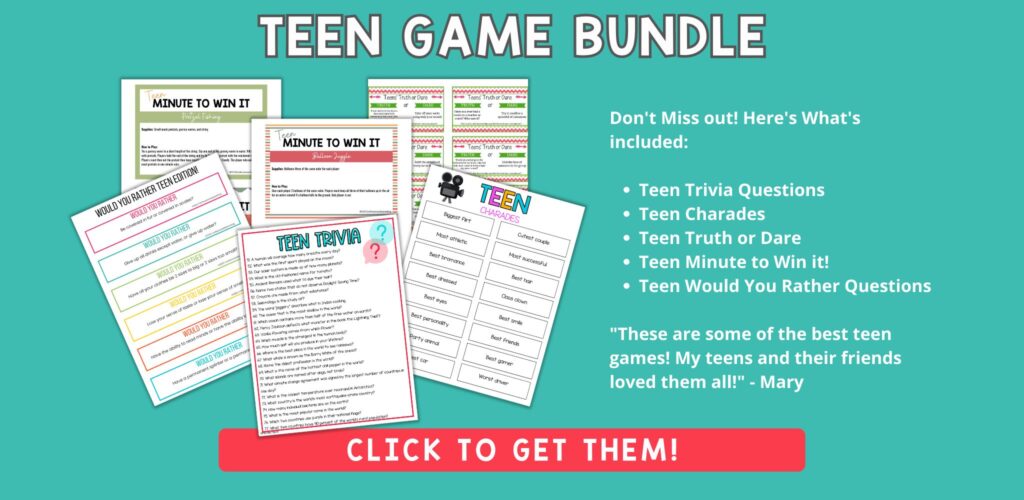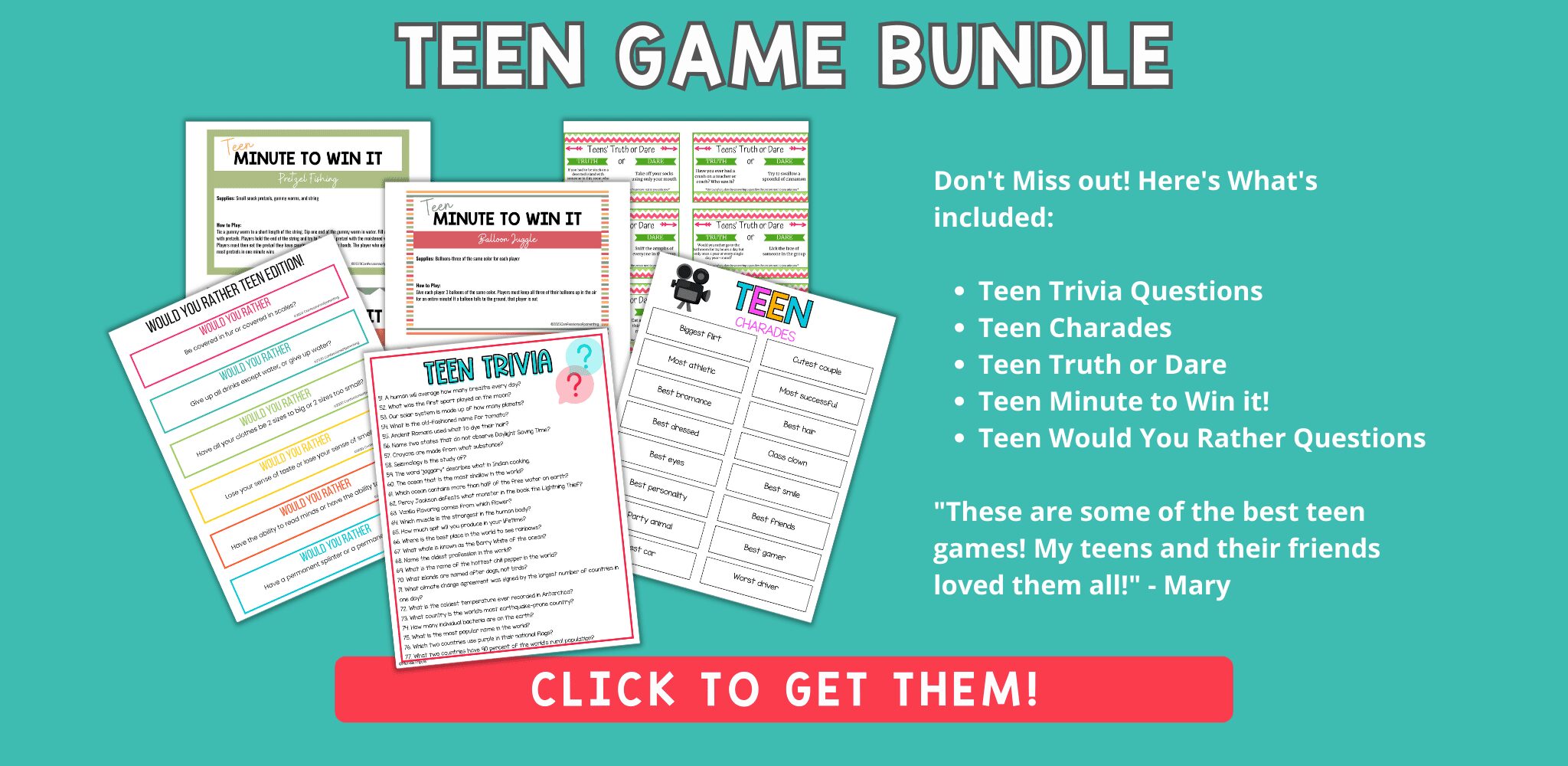
This or That Questions for Teenagers: Engaging Conversation Starters
Navigating the teenage years can be a complex and often confusing journey. As teenagers grapple with identity, relationships, and future aspirations, finding common ground for meaningful conversations can be challenging. Enter: This or That questions for teenagers. These simple yet effective prompts offer a fun and engaging way to spark dialogue, encourage critical thinking, and uncover surprising insights into the minds of young adults. This article delves into the world of this or that questions, exploring their benefits, providing a diverse range of examples, and offering tips on how to use them effectively.
Why Use This or That Questions with Teenagers?
This or That questions aren’t just icebreakers; they are powerful tools for fostering connection and understanding. Here’s why they are particularly beneficial for teenagers:
- Simple and Accessible: The straightforward format eliminates the pressure of elaborate answers, making it easy for even the most introverted teens to participate.
- Revealing Insights: Choices often reflect deeper values, preferences, and perspectives, providing valuable insights into a teenager’s character.
- Conversation Starters: They naturally lead to follow-up questions and discussions, expanding beyond the initial choice.
- Encourage Critical Thinking: Some this or that questions require weighing pros and cons, promoting decision-making skills.
- Lighthearted and Fun: They create a relaxed and enjoyable atmosphere, making it easier to build rapport.
Categories of This or That Questions for Teenagers
To maximize engagement, it’s helpful to categorize this or that questions based on different themes. Here are some examples:
Personal Preferences
These questions explore individual tastes and habits:
- Pizza or Burgers?
- Netflix or YouTube?
- Summer or Winter?
- City or Countryside?
- Books or Movies?
- Coffee or Tea?
- Early Bird or Night Owl?
- Sweet or Savory?
- Dogs or Cats?
- Phone Call or Text Message?
Hypothetical Scenarios
These questions encourage imaginative thinking and problem-solving:
- Teleportation or Time Travel?
- Read Minds or Be Invisible?
- Win the Lottery or Find True Love?
- Live in the Past or the Future?
- Be a Superhero or a Supervillain?
- Speak Every Language or Play Every Instrument?
- Control the Weather or Control Technology?
- Never Sleep Again or Never Eat Again?
- Have Unlimited Money or Unlimited Time?
- Be Famous or Be Rich?
Social Situations
These questions explore social dynamics and relationships:
- Large Party or Small Gathering?
- Introvert or Extrovert?
- Follower or Leader?
- Honesty or Kindness?
- Public Speaking or One-on-One Conversation?
- Plan Ahead or Be Spontaneous?
- Work Alone or Work in a Team?
- Give Advice or Receive Advice?
- Forgive or Forget?
- Stay In or Go Out?
Future Aspirations
These questions delve into career goals and life choices:
- College or Trade School?
- Travel the World or Settle Down?
- Big City Job or Small Town Business?
- Work for Yourself or Work for a Company?
- High Salary or Job Satisfaction?
- Creative Career or Practical Career?
- Start a Family Early or Later in Life?
- Buy a House or Rent an Apartment?
- Save Money or Spend Money?
- Live to Work or Work to Live?
Moral Dilemmas
These questions encourage ethical consideration and discussion:
- Lie to Protect a Friend or Tell the Truth?
- Break a Promise or Hurt Someone’s Feelings?
- Cheat on a Test to Help a Friend or Refuse?
- Steal Food to Feed Your Family or Go Hungry?
- Betray a Secret to Save a Life or Keep Your Word?
- Do What’s Right Even if It’s Unpopular or Follow the Crowd?
- Report a Crime or Protect a Friend?
- Choose Money or Happiness?
- Be Right or Be Kind?
- Sacrifice Yourself for Others or Save Yourself?
Tips for Using This or That Questions Effectively
While the format is simple, there are ways to maximize the impact of this or that questions:
- Know Your Audience: Tailor the questions to the age, interests, and maturity level of the teenagers you are interacting with.
- Create a Safe Space: Encourage open and honest sharing without judgment.
- Follow Up: Don’t just ask the question; delve deeper into the reasoning behind their choices. Ask “Why?” or “Tell me more about that.”
- Be a Participant: Share your own answers to create a sense of reciprocity and connection.
- Use Them Strategically: Incorporate this or that questions into various settings, such as family dinners, classroom activities, or youth group meetings.
- Keep it Light: Avoid overly serious or sensitive topics, especially when first getting to know someone.
- Mix It Up: Combine different categories of questions to keep things interesting.
- Listen Actively: Pay attention to both verbal and nonverbal cues to gain a deeper understanding of their perspectives.
- Respect Boundaries: If a teenager is uncomfortable answering a question, don’t pressure them.
- Have Fun: The primary goal is to create a positive and engaging experience.
Examples of This or That Questions Tailored for Different Scenarios
Here are some specific examples of this or that questions tailored for different scenarios:
Icebreakers for New Groups
- Movies or Music?
- Sweet or Salty?
- Beach or Mountains?
- Dogs or Cats?
- Books or Video Games?
Family Dinner Conversations
- Cooking or Ordering Takeout?
- Vacation at the Beach or in the City?
- Board Games or Card Games?
- Early to Bed or Late Night Movie?
- Helping with Chores or Doing Homework?
Classroom Activities
- History or Science?
- Writing or Math?
- Group Projects or Individual Assignments?
- Presenting or Taking Tests?
- Reading or Discussing?
Youth Group Meetings
- Serving Others or Leading a Group?
- Sharing Your Testimony or Listening to Others?
- Traditional Worship or Contemporary Worship?
- Reading the Bible or Praying?
- Big Event or Small Group Study?
The Psychology Behind This or That Questions
The effectiveness of this or that questions lies in their simplicity and the way they tap into fundamental aspects of human psychology. By presenting a binary choice, these questions bypass the complexity of nuanced opinions and force a decision. This decision-making process, even on seemingly trivial matters, can reveal underlying preferences, values, and cognitive biases.
Furthermore, the act of expressing a preference, even a simple one, can contribute to a sense of identity and self-awareness. As teenagers navigate the formative years of their lives, this or that questions can provide a framework for exploring their own tastes and beliefs, helping them to better understand themselves and their place in the world.
The social aspect of these questions is also significant. Sharing preferences with others fosters a sense of connection and belonging. It creates opportunities for shared experiences, mutual understanding, and the development of meaningful relationships. In a world increasingly dominated by digital communication, this or that questions offer a refreshing and engaging way to connect with others on a more personal level.
Beyond the Basics: Expanding on This or That Questions
While the core concept of this or that questions is simple, there are numerous ways to expand on them and make them even more engaging. One approach is to add a “Why?” or “Explain your choice” component to each question. This encourages deeper reflection and provides an opportunity for teenagers to articulate their reasoning. Another approach is to use this or that questions as a springboard for more open-ended discussions. For example, after asking “Pizza or Burgers?”, you could follow up with questions like “What’s your favorite pizza topping?” or “What makes a really good burger?”
You can also adapt this or that questions to specific interests or topics. For example, if you’re talking to a group of aspiring musicians, you could ask questions like “Guitar or Piano?” or “Singing or Songwriting?” If you’re talking to a group of sports enthusiasts, you could ask questions like “Basketball or Football?” or “Watching the Game or Playing the Game?”
The key is to be creative and to tailor the questions to the specific context and audience. With a little imagination, this or that questions can be a powerful tool for fostering connection, encouraging critical thinking, and sparking meaningful conversations.
Conclusion: The Enduring Power of Simple Questions
In conclusion, this or that questions for teenagers are a versatile and valuable tool for fostering communication, encouraging critical thinking, and building relationships. Their simplicity makes them accessible, while their potential for sparking deeper conversations makes them surprisingly powerful. By understanding the benefits of these questions, tailoring them to specific audiences, and using them strategically, you can unlock a wealth of insights and create meaningful connections with the teenagers in your life. So, the next time you’re looking for a way to break the ice, start a conversation, or simply have some fun, remember the enduring power of this or that questions. [See also: Icebreaker Questions for Teens]

